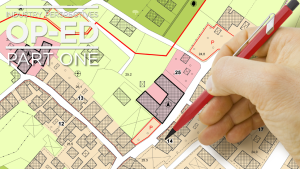The troubling spread of COVID-19 through long-term care facilities in Ontario over the past few months points to the need for an overhaul of not only how nursing homes operate but how they have been built and designed.
Much of the infrastructure is old and in dire need of renewal, says Mark Lewis, general counsel for the Carpenters’ District Council of Ontario (CDCO), who, together with CDCO president Mike Yorke, is leading a study examining age and structural standards, including interior layouts, and the ownership mechanisms of nursing homes in the province.
“We think COVID-19 has ripped the Band-Aid off this industry,” says Yorke.
The study includes research on the province’s long-term care (LTC) homes by a team of university students paid by the Carpenters’ council.
Findings to date show the highest coronavirus infection rate has occurred in homes built to 1972, or older, provincial nursing home standards. Defined as D- and C-level facilities – typically having four persons per room and one bathroom – these homes comprise more than 33 per cent of the entire province’s long-term care beds, Lewis says.
According to the study involving LTC homes that reported major virus outbreaks, the COVID-19 infection rate was 60 per cent among residents in the facilities built to the 1972 standards, based on a bed count of 4,636, says Lewis.
“If you think of how much the world has changed since 1972, then why are we still housing a third of the seniors in long-term care that meet standards of almost 50 years ago?” he states.
By comparison, in homes under outbreak that meet or exceed the 1999 provincial long-term care manual standards, the infection rate is only 26 per cent of residents, based on the study’s count of 6,548 beds.
These homes have one or two beds per suite and more useable floor space per occupant than earlier-built homes, Lewis says.
While finding a remedy to the crop of issues is anything but simple, Lewis says a solution is vital and work on it should be urgent.
“We’re deluding ourselves if we don’t try and fix those problems,” he says.
Lewis explains it might be feasible to retrofit some older homes, but that will depend on many factors, including major structural issues, HVAC and electrical system retrofits and the logistics of room reconfigurations.
He says that of the C-level beds, 80 per cent are in the for-profit sector; only 12 per cent are not-for-profit and eight per cent operate as municipal homes for the aged.
“There’s going to have to be some practical decisions about who is going to be responsible for the upgrades and how they are going to be done,” he says.
Yorke stresses the value of Infection Control Risk Assessment (ICRA) training for construction work in hospitals and LTC facilities.
“Retrofitting within medical settings is some of the most dangerous work our members do because of the contamination that can exist in the ceilings, the floors and the walls,” he says.
The College of Carpenters and Allied Trades (CCAT) in Woodbridge, Ont. offers the only comprehensive union training course on ICRA in Ontario. The 24-hour program includes 16 hours of in-class theory and eight hours of hands-on training. Students receive an ICRA certificate from the United Brotherhood of Carpenters’ International Training Centre.
Lewis says the goal of the study is to be a reference point in the provincial government’s inquiry into the future of LTC.
“These facilities are for seniors who contributed their lives to make Ontario such a great place to live,” he says. “They shouldn’t be living in what are now substandard facilities which could contribute to making them sick.”











Recent Comments